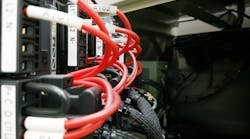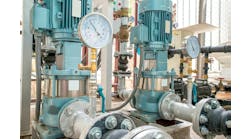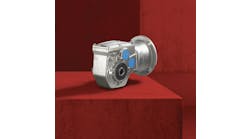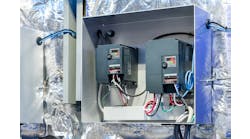In the dynamic landscape of modern industry, the need to adapt and evolve is ever-present. By updating the machinery that is currently in use, we hope to increase industrial efficiency. One massive project involved converting dc drives to ac drives, building an overhead crane system and integrating a robot into industrial processes.
Some challenges we encountered in this project were technical complexity, compatibility issues, safety concerns, downtime mitigation and budget constraints. The technical complexity was evident in the formidable task of converting from dc drives to ac drives, installing an overhead crane and integrating a robot. This required a profound understanding of diverse technologies and their seamless harmonization. Compatibility issues arose when integrating new equipment with existing systems, demanding careful planning to ensure cohesive communication between components.
Safety was paramount, especially with the installation of an overhead crane and a robot, necessitating stringent safety protocols to protect both equipment and personnel. Minimizing production downtime was another significant challenge, as we aimed to manage the transition from old to new equipment without causing substantial disruptions.
The need for change
Direct-current (dc) drives have historically been used in industrial applications for precise speed control. However, they come with several limitations. DC drives require regular maintenance due to components like commutators and brushes, leading to increased costs and downtime. They are less energy-efficient compared to alternating-current (ac) drives, as they continuously draw power to maintain the magnetic field. In contrast, ac drives, with variable-frequency-drive (VFD) technology, consume power only when needed, reducing energy costs. Additionally, sourcing spare parts for dc drives is becoming more challenging as the industry shifts toward ac technology. Variable-frequency drives, a type of ac drive, are becoming increasingly common in modern industrial applications. The advantages can be summarized as follows: ac drives are highly energy-efficient, allow for precise control of motor speed and require lower maintenance due to their brushless design. They offer versatility for various motor types, regenerative braking for energy conservation, reduced noise levels, soft starts and stops for equipment protection and remote-monitoring capabilities. Furthermore, their seamless integration with automation systems and the potential for substantial cost savings, particularly in energy consumption, make ac drives the preferred choice for enhancing productivity and efficiency across a wide range of industries.
Technical challenge
As the individual responsible for wiring the control-system integration, my role in addressing compatibility issues was pivotal in our project to upgrade industrial equipment. I was tasked with ensuring that the new ac drives, overhead crane and robot seamlessly integrated with our existing systems. This involved assessing and resolving compatibility challenges related to hardware, software and data exchange. I worked closely with a multidisciplinary team to adapt and upgrade control systems, develop standardized communication protocols and conduct extensive testing and simulations. Continuous monitoring and adjustments during the implementation phase were also under my purview. Through this meticulous approach, we successfully achieved compatibility between the new and existing components, optimizing operational efficiency and future-proofing our industrial processes.
Wiring the control-system integration was central to the industrial-equipment upgrade project. This encompassed both the physical wiring, which involved connecting power sources, data cables and communication links, as well as configuring the control systems to manage the operation of ac drives, the overhead crane and the robot. Rigorous integration testing ensured compatibility and functionality, with an emphasis on safety protocols, including emergency-shutdown systems and remote monitoring and control features. The design also accounted for adaptability and scalability to accommodate future technological advancements. Comprehensive documentation and training were provided to ensure effective operation and maintenance.
Troubleshooting and problem-solving were essential in the industrial-equipment upgrade project. With a deep understanding of the equipment and control systems, we quickly identified and analyzed issues. Collaborative problem-solving sessions and a rapid response approach allowed us to address challenges effectively, minimizing downtime. Each issue was seen as an opportunity for continuous improvement, with lessons learned used to refine our processes and protocols. Comprehensive documentation played a crucial role in building a knowledge base to support our ongoing efforts. In essence, troubleshooting and problem-solving were proactive strategies that ensured reliability, efficiency and minimal downtime in our upgraded industrial systems.
The significance of this project lies in its transformative impact of the industrial processes. By upgrading from dc drives to ac drives, installing a cutting-edge overhead crane and integrating a robot, we've achieved remarkable outcomes. The efficiency surged, resulting in increased productivity, reduced energy consumption and cost savings. Safety and compliance standards were exceeded, fostering a secure working environment. Furthermore, the new equipment is adaptable to future updates, and we successfully minimized production downtime during the transition.





